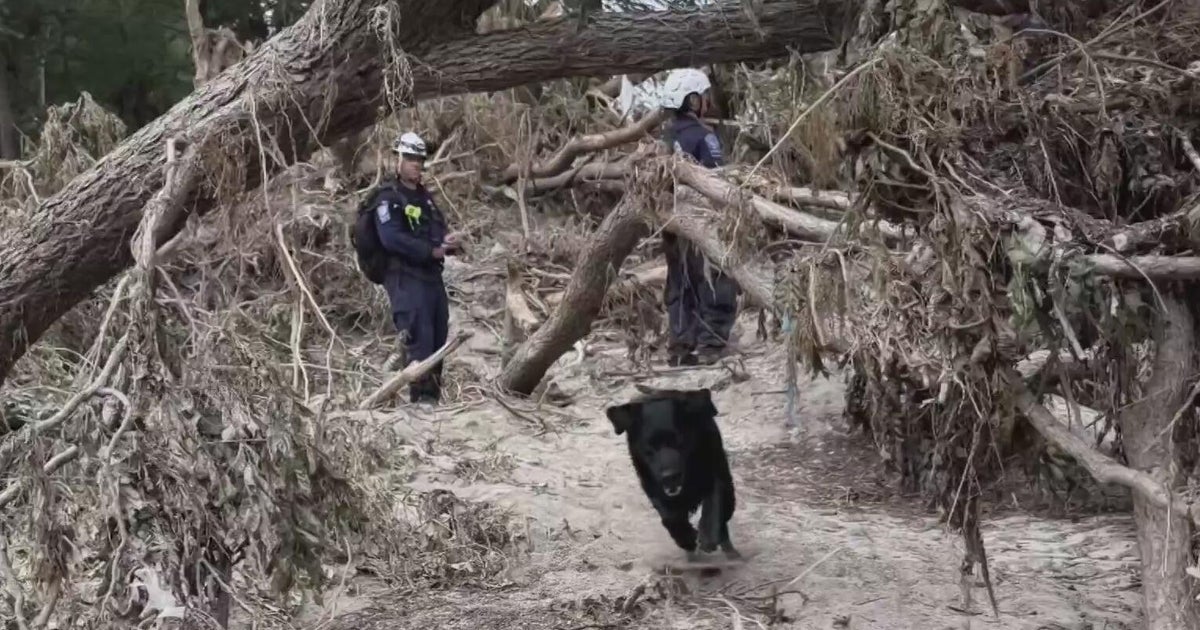Massive Water Release From Lake Mendocino Under Scrutiny Amid Drought
MENDOCINO COUNTY (KPIX 5) -- While rain is finally in the forecast, California's water situation remains bleak. Residents who rely on Lake Mendocino for water are questioning the government's decision to drain part of the lake for flood control, despite dry conditions.
Even when it's full, Lake Mendocino near Ukiah holds at best a year's worth of water. Currently, it is two-thirds empty and the Russian River downstream is just a trickle.
For Mike Martinez, it's a long, dry walk to the water's edge. "Short of '76-77 this is as low as I've ever seen the lake," Martinez told KPIX 5. "It's scary when I think about it in the big context of our water and the water table in general, it's scary because water, we take it for granted."
Lake Mendocino, which feeds the Russian River, is managed by the Army Corps of Engineers for flood control purposes and the Sonoma County Water Agency for water supply. At 36 percent of capacity, there is certainly no risk of flood, and a fast-dwindling supply.
More than a year ago, before the drought put pressure on people to conserve, Lake Mendocino had plenty of water. In a routine move, the Army Corps of Engineers, following what many say is an antiquated manual that dates back to when the dam was built in the 1950s, released a third of the water just in case.
"Unfortunately it didn't rain after December," said Mike Dillabough of the Corps of Engineers. Dillabough told KPIX 5 that it's not that his agency wanted to release the water. It had to, just in case the forecasters were wrong.
"The last thing we want to do is jeopardize the 250,000 residents downstream because we poorly operated the dam," Dillabough said.
"You can't make it rain but you can certainly manage the resources you get more efficiently," Sean White, General Manger of the Russian River Flood Control District, told KPIX 5.
White, along with other critics, said the Corps' is being more than overly cautious.
"There was never any rain in the forecast. There was never any rain on the horizon and if they had the flexibility to look outside, that water would still be in the lake and we'd have twice the supply we have today," White said.
The Sonoma County Water Agency agrees. In an effort to keep more water in the lake for its customers, the district has partnered with the federal government to come up with an improved forecast formula the agency said would better forecast when storms are coming and when they are not.
"Sometimes it's more important to let the Corps' know when a large event is not going to happen as opposed to when weather's coming in," said Grant Davis, General Manager of the Sonoma County Water Agency.
The Army Corps of Engineers response is cautious. "We will go through those studies, it's a very expensive study, we will be very exhaustive, very detailed in that before we say 'yes, we can do it,'" Dillabough said.
There is also a push to raise the height of the dam. The original plan was to build an additional 32 feet as a Phase Two back in the 1980s, but it was never done because of money. According to the Corps', while the original dam cost $8 million 60 years ago, a Phase Two addition would cost $250 million today.
Water continues to be released from the lake to maintain a certain flow in the Russian River to support the salmon and steelhead. As of a month ago, the state agreed the flow could drop to 25 cubic feet per second. In a normal year, minimum flow is 150 cubic feet per second.



